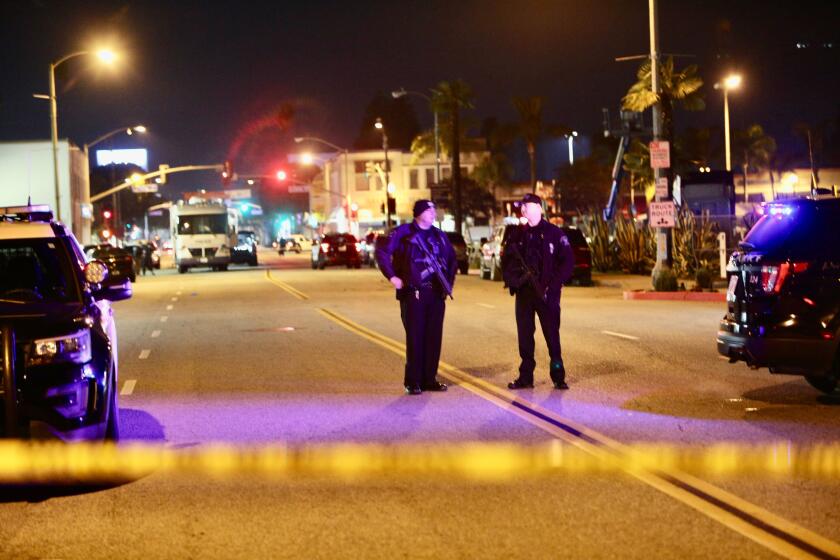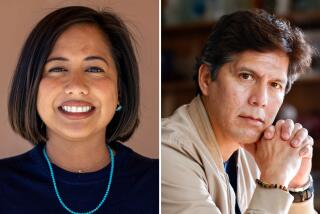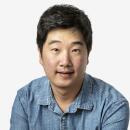Lunar New Year shooting: A grim moment in Monterey Park, America’s first suburban Chinatown
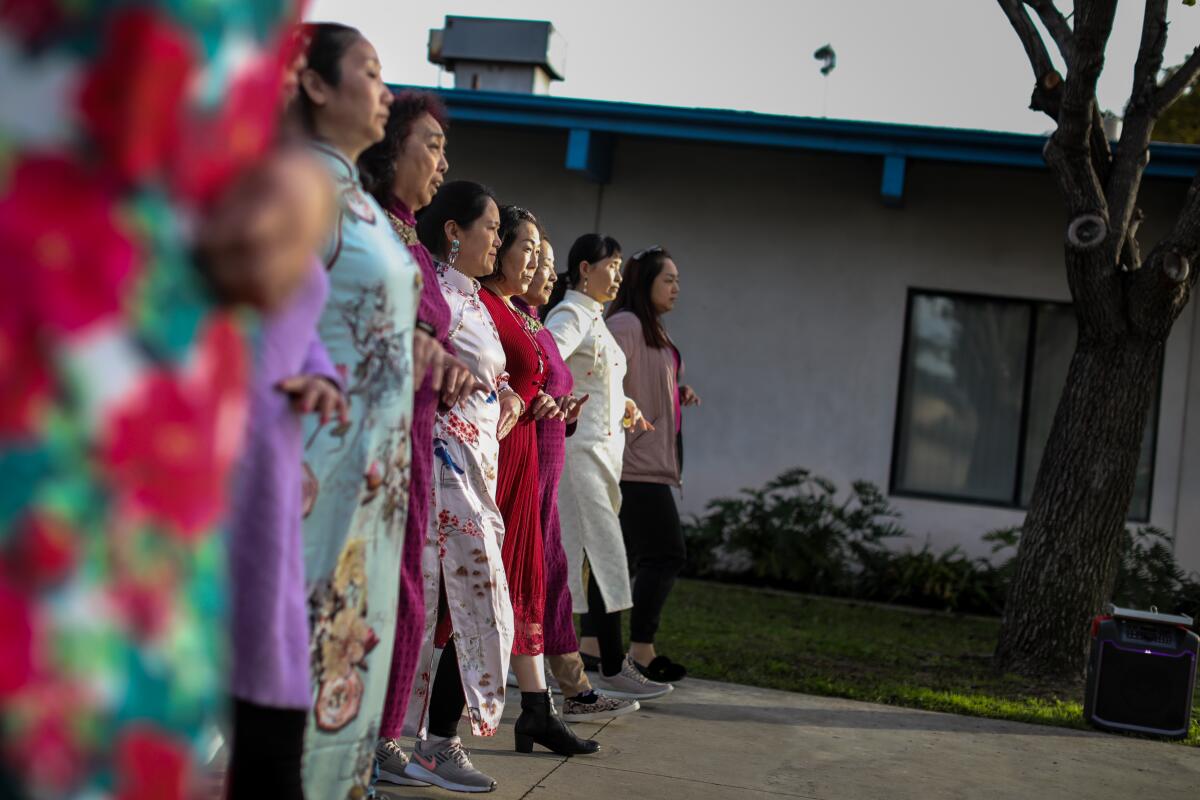
- Share via
Sometime between 1970 and 1990, Monterey Park became America’s first suburban Chinatown, where swift demographic changes heralded conflicts over language, signs, a changing business scene and political voice. In 2023 it is a city once again in flux, but as a tight-knit community whose residents typify what it means to be an Asian American — and the spectrum within.
On Sunday these residents and leaders were reeling after a mass shooting inside a dance studio killed 10 and injured 10 others during a Lunar New Year festival that drew tens of thousands of revelers, giving many pause to reflect on their city with both heartbreak and pride.
“#MontereyPark is home for my diasporic family. It is where you find the best damn Chinese food in the U.S.,” said a person identified in a tweet as Bianca Mabute-Louie, a scholar and activist. She said she wanted people to know a few things about Monterey Park. “It is the 1st Asian ethnoburb: an ethnic enclave in the ‘burbs that thrives b/c it refuses to assimilate, instead unapologetically catering to its own immigrant community.”
City Councilmember Yvonne Yiu is one of four Asian Americans on the five-member council.
“We have a strong and loving community here in Monterey Park. ... We need to show the strength and decency of our community to each other. To reach out with a helping hand and be there in the moment of need,” she said. “This is what defines us, this is what it means to be a community. Please pray for the victims and their families, pray for the city to recover and pray for all the residents in Monterey Park to be strong and be united!”
A deadly mass shooting inside a Monterey Park dance studio led authorities to Torrance on Sunday, where the suspected gunman died of a self-inflicted gunshot wound in a strip mall parking lot.
The suburb less than 10 miles east of downtown Los Angeles is one of the oldest cities demographically in L.A. County, with a median age of 43.1 as of the 2020 census. Yet it’s a city that now has two Asian American council members who have come out as gay — including a 35-year-old.
It’s a city that has Atlantic Times Square, a mixed-use development where two-bedrooms rent for $3,300. But it’s also a city that has boarding houses, where older, first-generation Chinese Americans live on couches for $15 a night.
It was during the mid-1970s, when Fred Hsieh, a real estate executive and developer, advertised Monterey Park as “the Chinese Beverly Hills.” He saw the city, about 15 to 20 minutes away from Los Angeles’ Chinatown, as a suitable place to grow for the Chinese American community, including those from Taiwan and Hong Kong.
The city of 61,000 in the hilly transition from East Los Angeles to the San Gabriel Valley soon had the highest concentration of Asian residents of any city in the country and was the starting point of a massive migration that would change the identity of dozens of cities to its east.
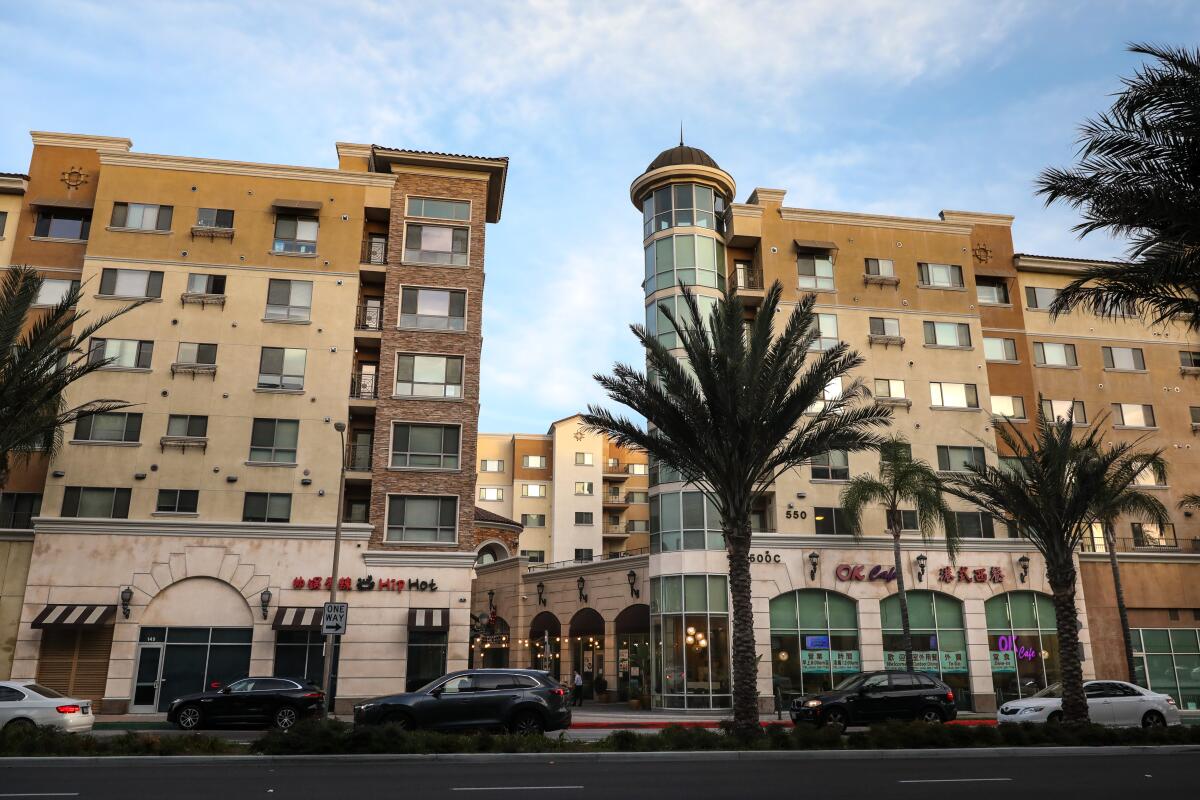
That transformation, from 14% Asian in 1970 to 65% today, has produced milestones of Asian participation in American politics, from the election of the nation’s first Asian female mayor to the first Chinese American woman elected to Congress.
Monterey Park initially attracted Taiwan investors and professionals. But by the mid-1980s, those coming from mainland China surpassed that of Taiwan, wrote Min Zhou, a UCLA sociology professor who has studied the city for decades, in her 2008 paper.
There were first-generation immigrants looking for work, but there were “parachute kids,” those left alone in the U.S. for education. There were also “spacemen,” Chinese transnationals with their wives and children who stayed in Monterey Park while shuttling back and forth between China and the U.S., Zhou wrote.
Eleven people are dead after a man opened fire in a dance studio in Monterey Park. Police believe the shooter also targeted an Alhambra studio. Here’s what we know.
The change has also brought conflict over issues as technical as city planning and as visceral as language.
In 1985, two years after Lily Lee Chen became the first Chinese American woman elected mayor of a U.S. city, a city-sponsored survey found a community in racial discord. White and Latino residents expressed strong anti-Asian sentiments, and Asians complained of racism in schools and that Asians lacked representation.
That same year, while national media were characterizing Monterey Park as a middle-class melting pot, a group of residents led an effort to declare English the city’s official language. A bumper sticker became popular with locals: “Will the Last American to Leave Monterey Park Please Bring the Flag?”
Back then, the prospect of a Chinese-dominated city government was many longtime residents’ worst nightmare, Francisco Alonso, a former mayor, told The Times in 2015.
“When you have too rapid of a change, this completely different culture zooming in, there’s friction at first,” he told The Times.
A decade of condominium and apartment construction touched off by Hsieh erupted as an issue in the 1986 council election. Longtime residents — rankled over Chinese-language business signs and traffic congestion — joined forces under the banner of controlled growth.
Chen and the two incumbents were swept out of office by three challengers supporting a policy of no growth.
The new council pushed through a moratorium on the construction of condominiums and apartments and a resolution that supported English as the country’s official language and called on the Police Department to assist immigration authorities in ferreting out those in the country illegally.
A counter swell brought several hundred Taiwan natives to a City Hall protest. A man with a bullhorn sang the civil rights anthem “We Shall Overcome.” Grandmothers and children carried placards that read, “Hell no, we won’t go” and “America, Land of Oppression.”
Twelve weeks after the demonstration, in the face of continuing pressure from the Chinese community, the City Council voted 3 to 2 to rescind the English-language and immigration resolution.
But if the demonstration bore the indignation of another era, it also offered a peek into the future. Chinese community leaders said it signaled a political coming of age.
A movement called Citizens for Harmony in Monterey Park brokered what Jan Lin, a sociology professor at Occidental College, called a “moderate resolution” to address development issues. The movement also launched Judy Chu (D-Monterey Park) to her election as a councilwoman and ultimately the first Chinese American woman elected to Congress in 2009.
By the 2000s, an “immigrant growth machine” was coming into full force in the city, Lin said. Atlantic Times Square, with its AMC theater and shops aimed at younger Asian Americans, became a milestone.
The city faces a number of challenges.
Garvey Avenue, the city’s downtown, has been a street where immigrants find work and build their mom-and-pop businesses. Yet key lots along the street have been left empty for years.
Some immigrants, especially those who are wealthier, move out of the city and into more affluent areas such as Hacienda Heights and San Marino.
More recently, the pandemic caused a slowdown in travel from China at a time when the city was looking at tourism as a way to generate revenue — including a Courtyard by Marriott hotel that opened in 2021 across from Atlantic Times Square.
Still, the city remains what Zhou called the “commercial center of the Chinese ethnoburb.”
In an interview with The Times Sunday afternoon, Mayor Henry Lo called Monterey Park “a resilient community,” staying strong through the pandemic that has hit Asian Americans hard.
“Often, when there are challenges, we stuck together,” he said. “We will be able to heal and move on together from this latest crisis.”
- Share via
Watch L.A. Times Today at 7 p.m. on Spectrum News 1 on Channel 1 or live stream on the Spectrum News App. Palos Verdes Peninsula and Orange County viewers can watch on Cox Systems on channel 99.
More to Read
Sign up for Essential California
The most important California stories and recommendations in your inbox every morning.
You may occasionally receive promotional content from the Los Angeles Times.

